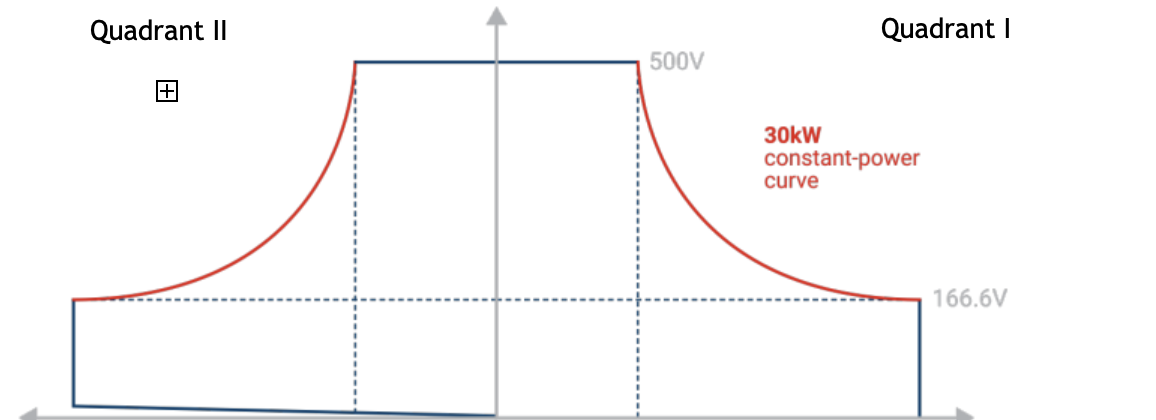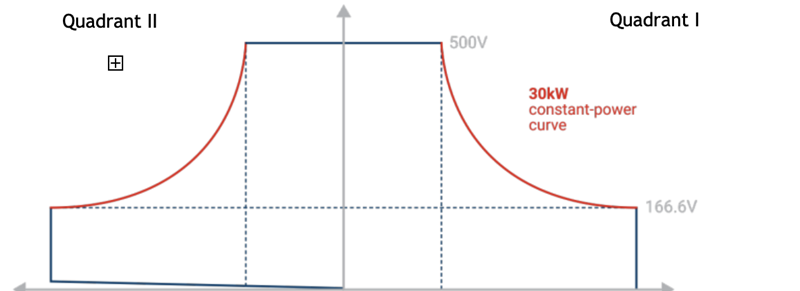Should You Consider a Bidirectional Power Supply

The advancements in power supply technologies represent a big step forward for sustainability and flexibility. In this landscape, bidirectional power supplies are real game-changers, merging traditional power delivery with energy recovery systems to drive innovation.
A Bidirectional power supply is an all-in-one solution that combines an electronic load (a power sink) and a direct current (DC) power supply. In other words, these modules perform multiple functions in a single enclosure.
The question is, should you consider bidirectional DC power supplies for your power systems? In this exploration of bidirectional power supply technology, we’ll do a deep dive into the capabilities, benefits, and use cases of these systems.
What Is a Bidirectional Power Supply?
A bidirectional power supply is a sophisticated device capable of both Sourcing power and sinking power from a load. Most loads achieve this by burning off the power in the form of heat. EA bidirectional power supplies are 96.5% regenerative and that power is put back into the local grid building itself. To achieve this, these systems must be able to convert DC power back to alternating current (AC) power. The AC/DC conversion promotes better efficiency.
Unlike traditional uni-directional power supplies that only send power in one direction — from the source to the load — a bidirectional power supply can reverse that flow. This ability, not only allows it to operate as a standard power supply but also as an electronic load, absorbing energy and either dissipating it or returning it to the local facility.
There are numerous use cases for a bidirectional power supply, including the following:
Testing and Simulation
In research and development or quality assurance settings, bidirectional power supplies can simulate different electrical conditions for testing electronic devices, components, or systems. For example, a bidirectional power supply can mimic the charging and discharging cycles in electric vehicles (EVs) or energy storage systems. This allows engineers to thoroughly test and optimize the way a battery charges.
Conducting a battery test is not just useful for research purposes, though. Setting up a battery simulator also ensures better consumer satisfaction and plays a key role in decisions like implementing warranty periods and pricing goods.
Renewable Energy Systems
Researchers use bidirectional power supplies to design and configure renewable energy systems, such as solar panels, fuel cells, and wind turbines. These supplies manage the flow of energy to and from the grid.
They can also simulate grid conditions, helping to develop and test inverters and controllers. In turn, these inverters and controllers efficiently convert and supply renewable energy to the grid or draw energy from it when necessary.
Energy Recovery and Efficiency
During testing or operation, a load, such as a motor, battery, or capacitor, sometimes releases energy (during braking or discharging). When this happens, a bidirectional power supply can absorb output power.
Once it captures the output current, it can dissipate it in a controlled manner or return it to the grid. The latter option reduces output voltage and current waste, thereby boosting efficiency.
Laboratory and Education
Imagine you’re a researcher in a laboratory tasked with testing the performance of a new electric vehicle (EV) charging system. You’ve integrated a bidirectional power supply system into your setup, recognizing its value as a versatile piece of test equipment. With this system, you can precisely control the voltage range and simulate various charging scenarios, from standard charging to fast charging and even vehicle-to-grid (V2G) applications.
To achieve accurate and reliable results, you delve into the study of power electronics and energy conversion principles. Understanding these principles allows you to design and optimize the charging system’s power management algorithms, ensuring efficient energy transfer and compatibility with different EV models. Through meticulous experimentation and analysis, you contribute to the advancement of sustainable transportation technologies.
Bidirectional power supply systems represent a valuable piece of test equipment in lab settings. Researchers can precisely control the voltage range and test systems that require complex power management. This includes the study of power electronics and energy conversion principles.
Automotive Industry
The vehicle manufacturing sector uses bidirectional power supplies to simulate the electrical systems for electric and hybrid vehicle development. They measure the DC voltage thresholds of these systems, ensuring that all critical components receive constant power during operation.
In recent years, the EV market has experienced rapid growth, with over 2.3 million electric vehicles being sold in Q1 of 2023 alone. This surge in demand has led testers to invest heavily in bidirectional power supply solutions.
The Benefits of a Bidirectional Power Supply
A bidirectional power supply offers a variety of capabilities and features that make it an excellent addition to your system design. Some of the most notable benefits and capabilities of these devices include:
Auto Ranging Output
Autoranging power supplies can deliver full power at varies voltage and current specifications, ex low voltage high current or high voltage low current. Comparatively, traditional power supplies can provide high power at only one point: Imax and Vmax.
Additionally, autoranging solutions offer high voltage low current or high current low voltage. You can take advantage of these features by purchasing lower-wattage power supplies than you would have needed when using conventional solutions. When you apply this benefit across multiple devices or workstations, you’ll enjoy significant cost savings.

Built-in Function Generator
Leading bidirectional DC power supplies have built-in function generators, which means the electronic load and power supply can more fully test the device-under-test (DUT). But how does this apply to your use case? It’s simple — you can enjoy peace of mind knowing that you have extensively tested the DC electronic load and high voltage limits of your equipment. This also eliminates the need to script your test. All you need to do is input your test data and battery specifications. For example, battery charge and discharge.
Additionally, a power supply equipped with a built-in function generator can emulate a noisy source. This feature allows you to test how noise impacts a DUT. The system can also create ramp, step, or pulse-like loads to test how your DUT responds to dynamic fluctuations. This is especially important when testing systems that are frequently exposed to fluctuating loads, like photovoltaic cells and chargers.
Systems like the EA Powered have an internal function generator. This design approach avoids the complexity of creating a power supply for a load connected to an external source.
Connecting a high power supply to a low power signal is a major challenge, as you must protect the source from the high input and output levels. EA power supplies avoids this hassle altogether.
Regenerative Energy Recovery
Bidirectional power supplies are equipped with an inverter, which converts the energy it absorbs when the instrument is acting as a load. Then, the inverter returns the power to local facility. If the supply is in the sink or load mode, the instrument is capable of operating at an efficiency of up to 96.5%.
Another benefit is that the regenerative load system drastically reduces the amount of energy that is absorbed as heat. In turn, this decreases the burden on the instrument’s cooling system. When deployed at scale, regenerative energy recovery systems offer huge utility savings.
The rise of energy recovery systems speaks to the global focus on sustainability and decreased environmental impacts. These systems have the potential to decrease waste produced by solar farms, wind farms, and EVs.
More Ways to Interface with a Controller
High-end bidirectional power supplies like the EA Powered can interface with a programmable logic controller (PLC) or personal computer. When you are running PC-controlled automated tests, your PC will interface using a USB or Ethernet connection.
For process-control applications, you’ll need a PLC. You’ll enjoy several interface options, including:
- CAN
- CANopen
- Profibus
- EtherCAT
- Modbus
More importantly, the interfaces are programmable, allowing you to easily control your PLC. The end result is a simplified testing and monitoring process that promotes overall testing efficiency.
Applications for a Bidirectional Power Supply
Bidirectional power supplies are pivotal in modern testing, research, and energy management, offering unique advantages where energy flow control in both directions is essential. Here are some common applications and industries that benefit from these solutions.
Overview of Bidirectional Power Supply Applications
These devices allow you to support real-world conditions for testing electronic devices. They also facilitate energy recovery in renewable energy systems.
Their ability to both supply and absorb power makes them extremely valuable for accurately replicating the dynamic electrical environments encountered in practical applications. As a result, you can ensure that products and systems are well-tested and optimized for real-world use.
The importance of bidirectional power supplies in modern testing and research cannot be overstated. They enable more efficient, sustainable, and comprehensive analysis and development processes.
Examples of Industries Benefiting From Bidirectional Power Solutions
Numerous sectors benefit from bidirectional power solutions, including:
Automotive
In the automotive sector, bidirectional power supplies simulate battery charging and discharging, aiding in the testing of EV batteries and powertrain systems. While these power supplies are best known for their role in EV manufacturing, they are also a staple of internal combustion engine (ICE) vehicle development.
Modern vehicles are loaded with complex electronics, all of which are powered through sophisticated wiring networks. Power supplies promote the testing and quality control of these systems.
Renewable Energy
The renewable energy sector uses these power supplies to test and optimize solar inverters and wind turbine controllers. Test results guide design efforts and ensure efficient energy conversion and grid integration.
Aerospace
Aircraft manufacturers benefit from bidirectional power supplies in testing electrical systems under varying load conditions. This is crucial for ensuring reliability and safety in flight operations.
Related Products
If you need to maximize control and versatility during load testing, a bidirectional power supply system offers an ideal solution. We offers a broad range of EA power supplies, which are equipped with modern features such as built-in function generators and energy recovery systems.
Contact our team for more information or to request a quote the EA 10000 series programmable bidirectional power supplies.


